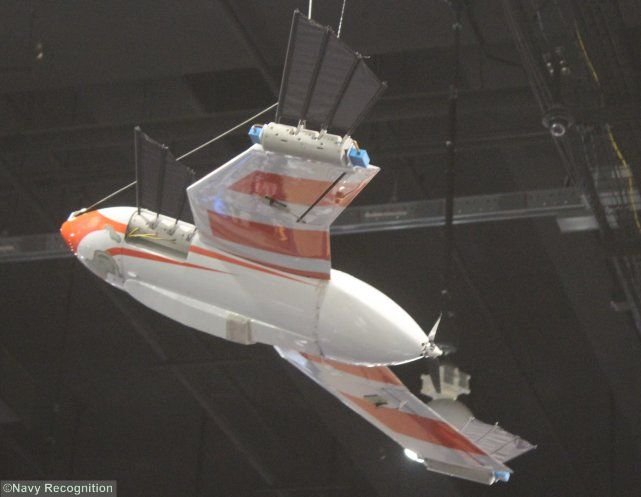 NRL's Flimmer UUV concept flying high at SAS 16 |
|||
Flying-Swimmer UUV
is an FY-13-FY15 research project to investigate potential benefits
from integrating an air delivery method with NRL's finned swimmer UUV
technologies.
Unlike an air-deployed Sonobuoy, ongoing research into novel bio-inspired UUV finned propulsion has potential benefits for autonomous motion beyond the insertion point. This combination of an airplane mode for UUV insertion is the thrust of the Flimmer program. UUV emplacement speeds are slow when long duration is required whereas UAV speeds are relatively fast and efficient. A flying emplacement is also not affected by high sea currents, opening the options for difficult-to-access areas. With NRL’s investigation into flapping pectoral fins for underwater propulsion, the question arises if these same fins can be used for aerodynamic control surfaces. The aero and hydrodynamics can be modeled similarly, making it possible to understand the optimization trade space for fin function in the two media. Initial experiments will equip the existing NRL swimming UUV with folding wings. The lessons learned will feed into a more optimized configuration, aided by CFD studies to rework specific fin issues such as handling landing loads. The project is developing flying UUV techniques and technologies for long-range air delivery of UUVs and investigating configurations for mixed-mode use of bio-inspired fins in both water and air environments. The next step would be to make the system glide to save further energy and increase the operational range of the the platform. |
|||
SAS 16: NRL gives wings to UUVs with its bio-inspired Flimmer
- Posted On










